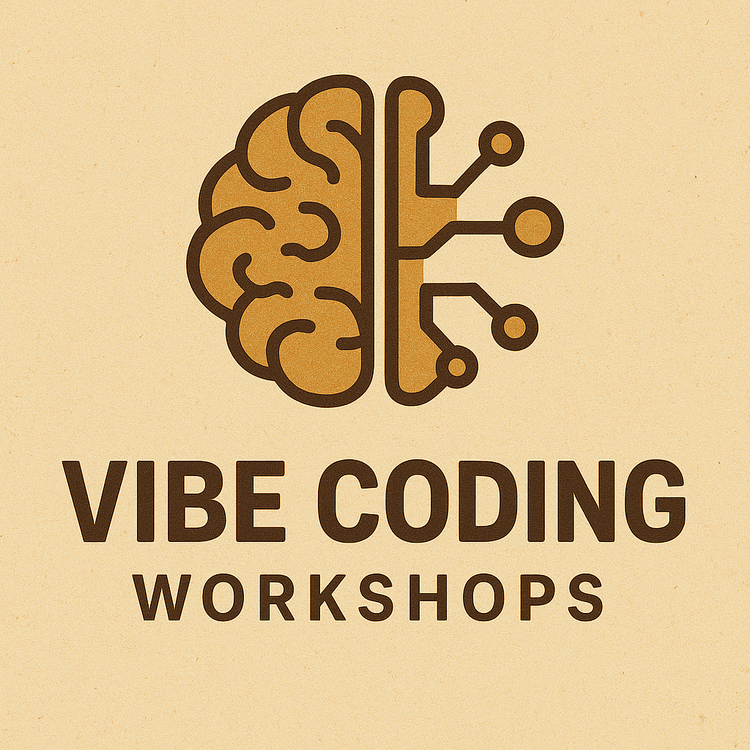How Big is the Mountain?

This is a new chapter for my book about PRC. Still in draft form...please send comments!
Endnotes are a mess. Will fix after a few more rewrites.
How Big is the Mountain?
The scholarly publishing industry is vast and deeply entrenched, with an estimated global market value of $10.8 billion in 2023, according to DeltaThink [1]. Subscription-based models dominate this market, accounting for around 80% of total revenue, while open access (OA) contributes approximately $2.2 billion, representing just over 20% of the market. Interestingly, despite this revenue disparity, OA now accounts for nearly 50% of the total published output.
Commercial publishers have structured their businesses around maximizing revenue and profits through subscription models, which remain their most profitable revenue stream. While open access (OA) articles generate less income per article than subscriptions, publishers maintain OA offerings alongside their subscription business. From their perspective, the higher margins from subscriptions effectively subsidize their lower-margin OA operations. As subscription revenues decline due to market pressures, publishers respond by increasing both OA article volume and Article Processing Charges (APCs) to maintain profitability.
This tension exposes a fundamental disconnect: Many commercial publishers view OA primarily as a business model to be optimized for profit, while researchers envision it as a transformative force for equitable access to knowledge. Until this misalignment of incentives is addressed, meaningful reform of scholarly publishing will remain challenging.
That’s not to say that business people aren’t open to change. In 2023, Jay Fynn, part of the executive team at Wiley, remarked at the STM meeting in Frankfurt [2], "We have to break our reliance on the version of record being a PDF article and move it into a linked, checked, badged, interoperable state-of-the-art system." This statement reflects a vision for a more dynamic and connected future for scholarly publishing. It’s important to recognize that business leaders like Jay clearly see the need for change and often articulate compelling visions of the future. However, their path to that future naturally involves providing the necessary technology and deriving profit, which is precisely what they are expected to do. The real obstacle to change isn’t some shadowy backroom where deals are made—though those certainly don’t help—but rather the misaligned incentives and deeply interdependent structures we have collectively built over time, together.
The challenges of changing the scholarly publishing system extend far beyond publishers and their business models. There is a deeply intwined hierarchical structure to content with - the ‘journal stack’ - comprising of three interdependent groups to contend with: business stakeholders, academic publishing staff, and researchers. At the top are business stakeholders, whose primary focus is maximizing revenue through subscriptions, APCs, and proprietary technologies. Academic publishing staff act as intermediaries, facilitating publishing workflows and often aligning with researchers' goals of disseminating knowledge. Researchers, at the foundation, are the creators, evaluators, and primary consumers of scholarly output. The business people are driven by profit maximization, researchers prioritize recognition and access, and academic publishing staff focus on operational efficiency. Transforming the system as a whole is therefore a complex undertaking, as it requires alignment across deeply entrenched, interlinked, and often conflicting priorities.
...the stranglehold existing journals have on academic publishing has stifled efforts to improve the ways scholars communicate with each other and the public.
-- Mike Eisen [2]
It is tempting to place blame on journals ‘for everything’, and many do, but journals play valuable roles, such as facilitating peer review, managing production, and disseminating research. Thats’s not to say there aren’t many things to be improved in this process, there are, but as it is today these organisations are performing funcitons that many stakeholders see as necessary. Likewise, the individuals who work within journals—editors, project managers, administrative staff etc—are dedicated, hardworking professionals committed to advancing knowledge. Also, there are diamond open-access journals who may not pursue radical process changes, often focusing on supporting the bottom two layers of the publishing hierarchy—administration and research—while forgoing the profit-driven business layer, but prioritizing equitable publishing. Similarly, there are societies and not-for-profit publishers that are genuinely mission-driven and strive to do their best by researchers, many of whom are actively pushing for meaningful change. The core issue, however, does not stem from the journals or their people but from the deeply entrenched system of misaligned incentives that underpins the entire structure.
Of course, this interconnected and tiered web of interests is not the only force at play. Universities, libraries, government bodies, funders, continental legislation, and various service providers add to the complexity of driving meaningful change.
...this industry has so many different stakeholders that are very interestingly intertwined... you have governments, you have libraries, you have institutions, you have the publisher, you have research... So change is generally difficult, and you have an industry that is mainly dominated by a handful of players that are driving change the way they want to drive change.
-- Sami Benchekroun, CEO Morressier [2]
We might ask: could technology serve as a catalyst for change? After all, we often view technology today as a disruptive force with the power to drive transformation. But in scholarly publishing, the ownership of tools creates barriers to disruption. From a high-level perspective, if you own the tools, you own the process—and this dynamic is a key reason why meaningful change in process and function remains so difficult. Major publishers such as Elsevier, Wiley, and Springer Nature, along with vendors like Silverchair, dominate the technological infrastructure of scholarly publishing with proprietary submission and content management systems. These tools form the backbone of the industry, shaping workflows and reinforcing entrenched priorities.
These systems, though often built on decades-old technology and highly inefficient, remain both operational and profitable, leaving their owners with little incentive to modernize or embrace disruptive innovation. As a result, the publishing landscape reflects the interests of a few large players who control the tools and, by extension, the processes of scholarly communication. This consolidation of technological control stifles competition and leaves researchers, institutions, and smaller publishers with limited options, reinforcing a status quo that resists the kind of systemic change many hope to see.
Elsevier’s acquisition of Aries Systems for an undisclosed amount [2], Wiley’s acquisition of Atypon (120 million USD [3]), Silverhcair’s aquistion of ScholarOne (estimated at $100-130m [4]), illustrate how publishers and vendors strengthen their hold over critical workflows through continued strategic investments. Over the past 25 years, only one significant new workflow platform—Hindawi’s Phenom—has entered the market, and it too was eventually acquired by Wiley together with the Hindawi journal portfolio for 298 million USD [4]. This dynamic ensures that emerging technologies align with the profit-driven priorities of major publishers rather than the evolving needs of researchers. These tools are widely used by journals, whether commercial or not-for-profit (as well as preprint servers), and regardless of their affiliation with major publishers, yet their licensing costs are expensive, further straining resources in an already constrained environment.
Adding to these challenges, these technology offerings often lock journals into long-term technology contracts spanning multiple years, further consolidating their control. Emerging platforms or open systems must secure substantial funding and sustain operations over extended periods, often without guarantees of success. This creates a self-reinforcing cycle where proprietary technologies dominate, stifling innovation and making the migration to open systems prohibitively difficult.
Compounding this, grassroots communities—often the backbone of open initiatives—tend to be wary of private equity (PE) or venture capital-backed enterprises (VC), associating them with profit-driven motives that conflict with community values (and understandably so). Yet, paradoxically, non-profit funders often demand the scalability and financial sustainability associated with these very models, creating a tension that leaves many open projects caught between two conflicting paradigms.
This misalignment is further exacerbated by a non-profit or philanthropic funding landscape that rarely provides the millions—or tens of millions—of dollars needed to support open infrastructure projects at scale. When funding is available, it often excludes critical elements like marketing and outreach—resources essential for adoption in an industry deeply rooted in relationships and lengthy sales cycles. Without these components, open systems struggle to gain the traction needed to challenge proprietary platforms, further entrenching the status quo and limiting opportunities for systemic change.
The barriers to change are not only technological or financial but also deeply cultural and social. Many researchers feel a strong sense of obligation to journals, often dedicating their limited service time to established players. This obligation is tied to more than tradition—it is also a matter of professional survival. Researchers, reliant on ongoing funding or aiming to climb the career ladder, leverage their publishing history and participation in this system to secure the resources they need, whether it’s to pay for their next research project or pay their mortgage (“publish or perish”). Additionally, editors hold significant social power, and researchers feel a professional duty to participate in these traditional structures—an obligation often absent in emerging services. Furthermore, time-constrained researchers and editorial staff, accustomed to familiar workflows, often resist adopting new methods, even when these offer clear improvements. This resistance is driven by both familiarity with existing systems, no matter how inefficient, and a lack of time to invest in learning new, potentially more efficient ways of working. This collective inertia leaves little room for meaningful innovation or reform.
Yet, despite these obstacles, change is happening. The conditions for transformation are emerging, driven by a combination of evolving cultural norms and technological progress. Discussions about open access often focus on its co-option by profit-driven motives, but if we view OA beyond its business model, it becomes clear that licensing is a critical foundation for systemic change. The growing preprint server ecosystem, built on open licenses, is increasingly shaping norms for how research is shared, fostering expectations of openness and immediacy. For many researchers, preprints are becoming the primary asset. Ask a researcher who regularly consumes preprints how often they follow up to read the "published" version—they’ll likely say seldom, if ever.
Similarly, the rise of review communities and curational projects, led by respected researchers from their fields, reflects not only a growing appetite within the open ecosystem but also a cultural endorsement of the value of rethinking how knowledge is evaluated and disseminated. Technological advancements are also playing a critical role. Workflow platforms are enabling more efficient, innovative and flexible processes, while the adoption of open persistent identifiers (PIDs) and the development of open infrastructure for hosting the scholarly record are building a strong foundation for a more connected, transparent, and distributed system.
Together, these developments are setting the stage for deeper systemic change. While the path forward may be steep, the conditions for a more equitable, open, and innovative scholarly publishing system are steadily taking shape.
Endnotes
- https://www.deltathink.com/news-views-total-value-of-scholarly-journals-market
- https://www.michaeleisen.org/blog/?p=1346
- https://youtu.be/mbjDQqXuRBg?si=79X3Ai1Mc-nRp8LN
- https://www.midnightatthecasablanca.com/episodes/sami-benchekroun
- Taken from the Midnight at Casablanca podcast: https://www.midnightatthecasablanca.com/episodes/will-schweitzer note: the ScholarOne project is closer to 25 years old.
- https://www.prnewswire.com/news-releases/elsevier-closes-its-acquisition-of-aries-systems-852913491.html
- https://www.atypon.com/news/wiley-signs-definitive-agreement-to-acquire-atypon/ the sale was for $120 million https://newsroom.wiley.com/press-releases/press-release-details/2016/Wiley-Signs-Definitive-Agreement-to-Acquire-Atypon/default.aspx
- https://www.silverchair.com/news/silverchair-acquires-scholarone, The actual deal is not publc but MarketShare estimates it at between 100-130 million USD https://www.marketscreener.com/quote/stock/CLARIVATE-PLC-64269210/news/Silverchair-Science-Communications-Inc-signed-a-definitive-agreement-to-acquire-ScholarOne-Inc-48193975/
- https://newsroom.wiley.com/press-releases/press-release-details/2021/Wiley-Announces-the-Acquisition-of-Hindawi/default.aspx - the 298 million includes the journals portfolio and Phenom platform.






Member discussion